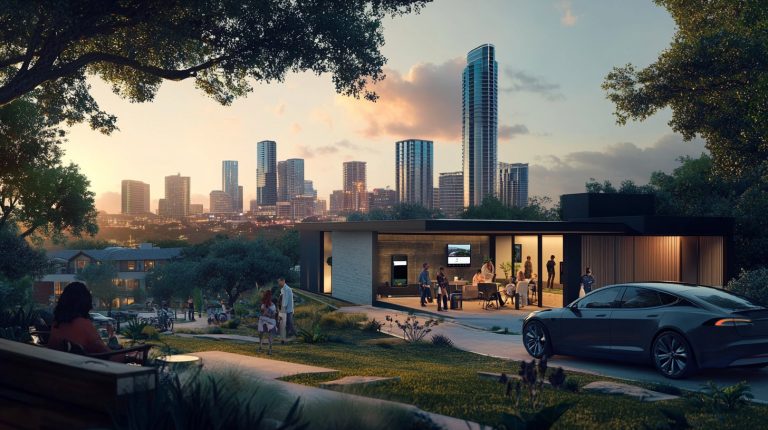You bought in Austin and the city hasn’t stopped changing since the closing table. Tech campuses keep sprouting, food-truck lines feel longer, and housing headlines swing from “inventory shortage” to “price correction” in the same month.
So you’re wondering: how long should you own a home before selling Austin? Is it still that famous five-year window, or does the capital of Texas play by different rules?
Grab your favorite breakfast taco. Let’s map it out.
Five Years or Bust? Not Exactly
Old-school advice says hold a property at least five years before you list it. The logic is simple:
You need time for appreciation to outrun closing costs and agent fees.
You want enough equity to avoid writing a big check on the way out.
You’d rather skip capital-gain taxes that kick in if you move too soon.
Decent foundation—yet Austin’s market can lean turbocharged one year and lukewarm the next. The blanket five-year rule? Helpful start, but not gospel.
Here’s what matters more:
1. Appreciation pace in your zip code, not a metro average.
1. Your original interest rate. Locked at 2.75%? That low payment buys extra flexibility.
2. How much you plowed into the down payment and into upgrades.
3. Lifestyle changes nobody predicts when they sign loan docs.
Think of five years as the training-wheels answer. Useful until you gather real numbers.
Quick Snapshot of the Austin Market Right Now
Data for early 2025 paints an interesting picture:
Median sales price: hovering near $540K, up roughly 3% year-over-year after a flat 2024.
Average days on market: 46—double the frenzy days of 2021, still quick compared with pre-pandemic norms.
New listings: climbing again as homeowners see mortgage rates drifting downward.
Job growth: healthy, led by semiconductor expansion and corporate relocations along I-35.
What does that mean for timing? Austin is no longer a runaway bidding-war machine, but it’s steady. If you bought in mid-2020, you might already be sitting on 30-plus percent appreciation. Bought in 2023 at the peak? You may need another couple of spring cycles to turn a real profit.
One more curveball: property taxes. Travis County reappraises values yearly, and increases can nibble at gains. Run those numbers before deciding to sell versus stay.
Equity Math Without the Headache
Equity = current value – loan balance. Easy formula, tricky inputs.
Here’s a quick exercise:
1. Hop on a reputable home-value estimator. Grab the mid-range number, not the top end.
2. Pull your mortgage statement and note the principal balance.
3. Subtract. That’s your raw equity.
4. Now subtract 8–10% for selling costs (agent commissions, title fees, buyer concessions).
If the remainder still looks healthy—and at least beats the next opportunity for your money—you’re in the green zone.
Want to boost that equity faster?
• Small cosmetic fixes: paint, lighting, landscaping.
• Energy upgrades: think smart thermostats and efficient windows that resonate with Austin’s eco-conscious crowd.
• Timing the sale for late February through April when Austin listings traditionally pop but inventory hasn’t mushroomed yet.
Is Early Selling a Terrible Idea? Sometimes Yes
Scenarios when bailing before year three stings:
You put less than 10% down. Appreciation hasn’t caught up with transaction costs yet.
You snagged a renovation loan but never fully executed the project. Buyers smell unfinished work.
You’ll face a hefty prepayment penalty from your lender (rare these days, still check).
You’d forfeit that sweet federal tax exclusion because you didn’t live there two out of the last five years. Up to $250K of gains shielded for single owners, $500K for joint owners—worth hanging on for.
Still, early exits can be smart:
1. Job transfer with a pay jump big enough to cover selling costs.
2. A life event demanding immediate cash; equity beats high-interest consumer debt every time.
3. You invested in a pre-2021 fixer, the neighborhood boomed, and offers are rolling in above anything projected. Sometimes opportunity knocks early—answer it.
Personal Curveballs That Shift the Timeline
Real estate calculators can’t foresee life curveballs. Keep an eye on these:
Commute fatigue: Austin traffic isn’t trending better. If your drive time doubled, quality of life matters.
School rezoning. Maybe the yard is perfect, but new district lines have you hunting elsewhere.
Interest-rate drops. Refi is one answer. Trade up is another if payments stay manageable.
Empty extra bedrooms? Downsizing sooner frees equity for investments, college funds, travel—you name it.
Measure these against the five-year idea, not beneath it. Your situation outranks a rule of thumb every single time.
Ready to Crunch Your Own Timeline?
Pull it all together:
1. Check your break-even: remaining loan balance vs. conservative sale price minus costs.
2. Confirm how many months until you hit two full years of primary-residence living for tax benefits.
3. Peek at local price trends for the last six quarters, not just headlines.
4. Weigh personal factors: commute, family size, cash goals.
5. Decide if renting the place after you move could outpace selling right now.
If the math leans “sell,” prep early. Declutter, tackle small repairs, get a professional valuation. Austin buyers still pay premiums for turnkey presentation.
If the math says “hold,” set a review date. Market shifts quick; revisit every six months.
Final Take
So, how long should you own a home before selling Austin? There’s no magic stamp. Five years works for many, three can work in roaring markets, seven ensures equity piles up even in plateaus.
Run the numbers, account for taxes, peek at your lifestyle roadmap. Then act with confidence—Austin rewards owners who make informed, timely moves.
Need a second set of eyes on those figures? Reach out. A quick strategy session now can save a five-figure regret later.





